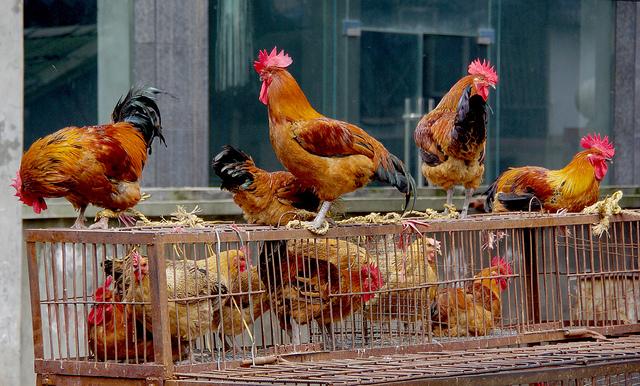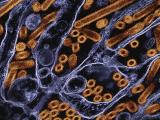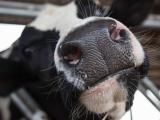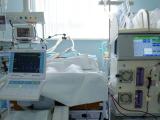A surge of H7N9 avian flu activity in China that began in December shows no sign of tailing off, with 61 new cases reported last week, pushing the mainland's total to at least 419 cases—100 more than the previous high reported during the second wave in 2013-14.
Recent cases in 10 provinces
The latest numbers are from an update today from Hong Kong's Centre for Health Protection (CHP) covering mainland cases reported from Feb 6 to Feb 12. The pace of cases reported for February so far puts the month on track to top the high number of cases seen in January.
The CHP said the 61 newest cases were reported from 10 of China's provinces, about half of them reported from Hubei, Zhejiang, and Jiangsu. Illness onsets range from Jan 6 to Feb 8. Patient ages range from 22 to 85 years, and investigations so far reveal that 25 patients had been exposed to poultry or live-poultry markets before they became ill.
A spokesman for the CHP said in the statement that the number of cases in this wave are much higher than the same time last winter. "This shows that the situation is abnormal." The CHP said the big rise in H7N9 cases in the mainland has also resulted in imported cases detected in Hong Kong, Macao, and Taiwan.
Yesterday Hong Kong officials met to discuss the global avian flu situation, including bird outbreaks involving the H5N6 and H5N8 strains, and plans to enhance precautions in Hong Kong.
In a statement, the CHP said it will send letters to doctors urging them to be alert for avian flu illnesses in humans. Other steps include thermal imaging at boundary checkpoints to detect fevers in inbound travelers and the activation of an electronic portal to help with early identification, testing, and notification.
Poultry testing, market closures
Chinese researchers have said that increased levels of H7N9 in poultry are likely driving the increase in human cases. Unlike other avian flu strains that cause disease in humans, H7N9 is a low-pathogenic strain in poultry, and infected birds don't usually show signs of illness.
An update yesterday from the United Nations Food and Agriculture Organization (FAO) provided a glimpse of recent poultry test findings, as well as an update on poultry market closures—a tactic used to stem past outbreaks.
The FAO said the Chinese agriculture ministry, as part of January surveillance, collected about 102,000 blood samples and about 55,000 virus swabs from birds at about 6,600 locations across 26 provinces. Twenty-six swabs tested positive for H7N9, most of them samples from market poultry in four provinces: Guangdong, Guizhou, Hunan, and Jiangsu. Serum sampling yielded 33 H7-positives from Guangdong and Shandong provinces.
Testing by provincial officials has also turned up positive tests that led to poultry market closures in cities in Guangdong and Hunan. After four human cases were detected in Sichuan province, authorities in one city shuttered 280 live-market stalls. On Feb 11, officials in Zhejiang province closed all poultry markets until further notice.
See also:
Feb 16 CHP statement
Feb 15 CHP statement
Feb 15 FAO report
Feb 10 CIDRAP News story "China now in its worst H7N9 avian flu season on record"




















